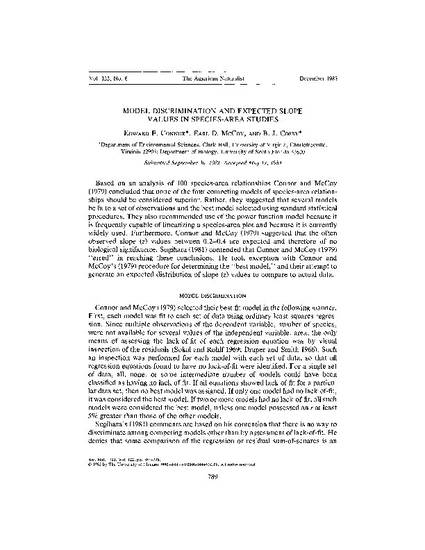
- Frequency distribution,
- Density distributions,
- Correlation coefficients,
- Natural history,
- Power functions,
- Logical givens
Based on an analysis of 100 species-area relationships Connor and McCoy (1979) concluded that none of the four competing models of species-area relation ships should be considered superior. Rather, they suggested that several models be fit to a set of observations and the best model selected using standard statistical procedures. They also recommended use of the power function model because it is frequently capable of linearizing a species-area plot and because it is currently widely used. Furthermore, Connor and McCoy (1979) suggested that the often observed slope (z) values between 0.2-0.4 are expected and therefore of no biological significance. Sugihara (1981) contended that Connor and McCoy (1979) "erred" in reaching these conclusions. He took exception with Connor and McCoy's (1979) procedure for determining the "best model," and their attempt to generate an expected distribution of slope (z) values to compare to actual data.
The American Naturalist, v. 122, issue 6, p. 789-796
© 1983 by The University of Chicago.
Available at: http://works.bepress.com/earl_mccoy/3/
